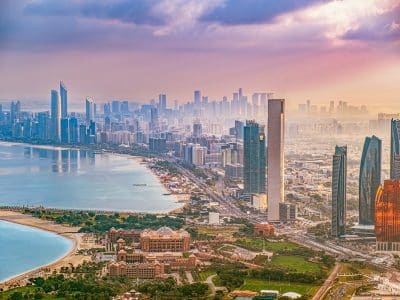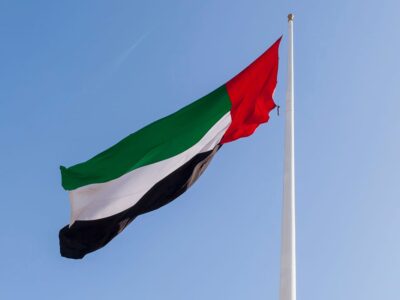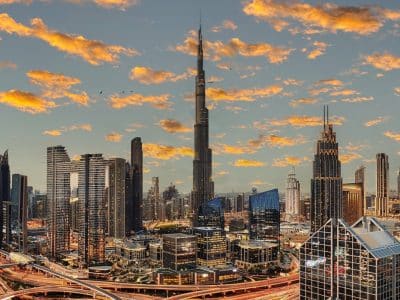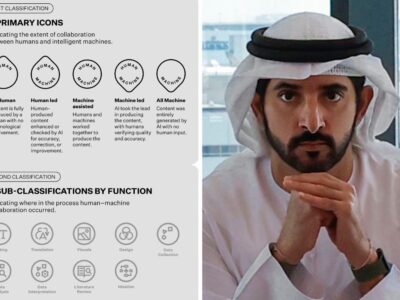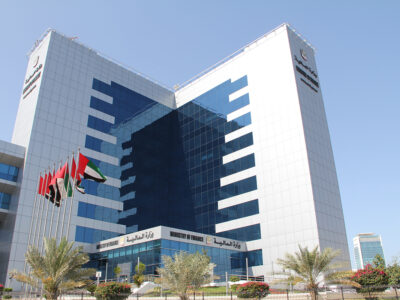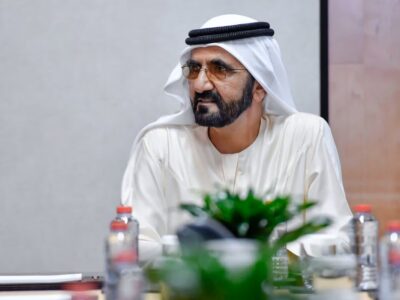We’ve all been witness to the exploding nature of development in Dubai, but one project is taking the scale of building to another level altoget her.On the emirate’s last remaining few kilometres of undeveloped coastline an entire city is rising from the ground.
At the moment, Dubai Waterfront is nothing more than endless miles of deserted beachfront dotted with a few lone cranes. But wait ten years and this patch of sand will be transformed into a living, breathing city twice the size of Hong Kong Island with housing for 1.5 million people.
In what is being billed as the largest and most ambitious urban development project in the world, developer Nakheel has master planned the new city entirely from scratch. It will rise up from the sand and sea on the last remaining 15km of undeveloped coastline in Dubai.
All in all Nakheel plans to develop 1.4 billion sq feet of empty desert, including natural coastline as well as man made islands, which will form a giant crescent arching around the Palm Jebel Ali, so big it is visible from space. The city will be composed of five major sections, with the centerpiece being Madinat Al Arab, the downtown business and shopping district.
The hub of the development will be along the shoreline, stretching in land to offer a range of residences, commercial districts and industrial areas with a number of major tourist attractions and leisure amenities.
Housing will encompass everything from luxury villas and high-end accommodation on the islands to affordable housing for Dubai’s working community – Omran, which will eventually provide housing for the 60,000 workers on the Waterfront site.
It’s hard to comprehend the mind-boggling scale of this project. “Waterfront is the largest and most ambitious urban development in the world,” says Matt Joyce, Waterfront managing director.
“Visible from outer space, it is an entirely new city planned from scratch on a blank canvas – no city of this size has ever been master planned to such a scale and such a degree.” But is it really possible just to build an entire city from scratch? And how will Dubai attract the business and residents to make it work?
The developers are convinced that starting from scratch puts them in the unique position of being able to iron out the mistakes made in other cities, before they’ve even begun. Rem Koolhaas of Office for Metropolitan Architecture (OMA) is the architect for the project. He says that his design will ensure that many of the downsides currently experienced by residents in Dubai will not be a feature in Waterfront.
Koolhaas is also a professor of practice in architecture and urban design at Harvard University, where one of his students was Zaha Hadid. He was awarded the Pritzker Architecture Prize in 2000 and the RIBA Gold Medal in 2004.
Recently OMA has completed the Netherlands Embassy in Berlin, the Prada Epicentre in Los Angeles and the Public Library in Seattle which was chosen by TIME magazine as The Best Architecture for 2004.
Although the Waterfront is OMA’s most high-profile project in the Middle East, other projects in the region include Porsche towers at Dubai’s Business Bay, Jeddah International airport, the Al-Rai master-plan in Kuwait and an emirate-wide masterplan in Ras al-Khaimah.
For example, it will be extremely compact, allowing residents to walk easily from place to place, and lending the city a sense of community spirit.
“The largest effect of all this useless movement we are forced to make is that it eliminates community,” he says.
“The main appeal of Waterfront will be the proximity. It will be very closely organised so many activities can take place on a single site.”
Koolhaas tells us that his primary aim is to create a city that welcomes a diverse mix of nationalities.
“I would like to pursue a city that has a sense of newness and is inviting a large number of new cultures to live within it. We are not only paying lip service to diversity. This city will be international in a way that will be totally different to what we now call international. We are trying to make it more open to other norms and expectations.”
Integrating culture into the fabric of life will also be a main priority, so Waterfront residents can presumably expect theatres, opera houses, museums and art galleries.
“We need to attract to the soul of the city genuine institutions, a public library, universities and political institutions. The buildings will be special, not only in their form but for what they offer the public at large. I also hope, but this is a personal thing, that it will attract Arabic needs. Dubai is interesting,” he points out, “but there is not much in terms of choices and things you can do.”
On top of all this, minimising the city’s ecological impact is being considered as well as how to avoid the problem of traffic. The city will be supported by a comprehensive public transport system, which will reduce the dependence on the car, as well as being connected to the Dubai Metro.
It all sounds pretty good in theory, all that’s missing is the millions of people ready move their families and businesses in and create the thriving metropolis that will be Waterfront.
But with Dubai’s population of 1.2 million projected to grow to 4 million by 2020, apparently this won’t pose too much of a problem. And you know how the old saying goes, “If you build it, they will come…”
• An estimated 1.5 million people will eventually live there
• The project will create 1 million jobs when complete
• Developed on the last 15km of natural coastline in Dubai
• 70km of extra coastline will be added to Dubai
• More than 3000 construction vehicles are currently on site
• Close to 1000 professional staff and 20,000 workers are involved in the project
• Earth works on the mainland are more than 80% complete
• 3.52 million cubic metres of land are being reclaimed each month (enough to fill Wembley stadium three times over)
